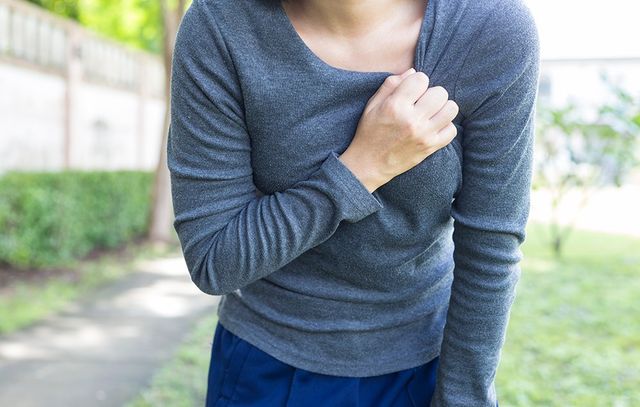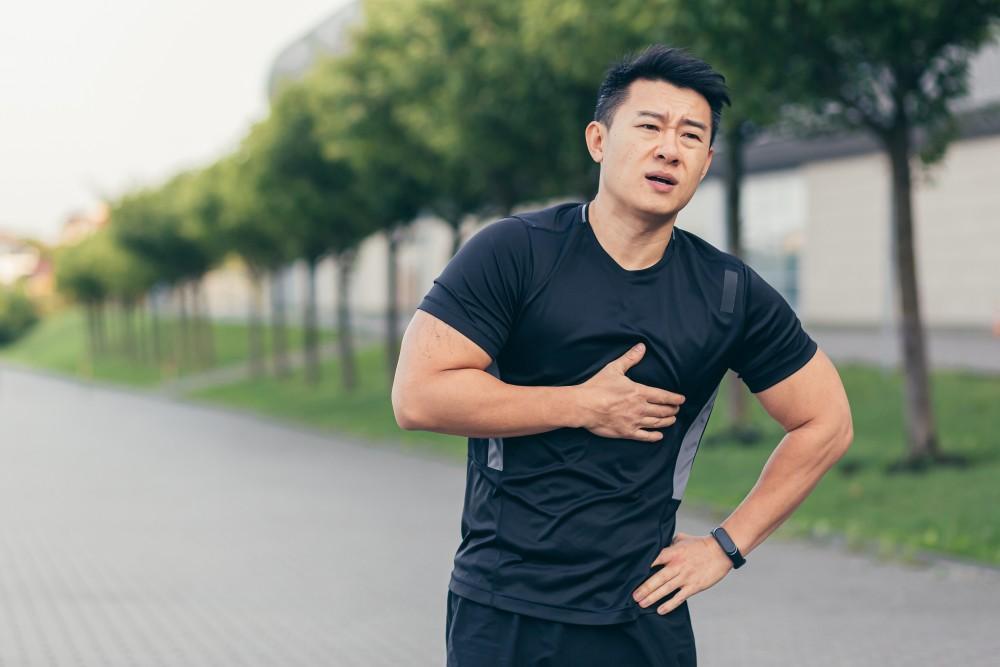Have you ever experienced that sharp twinge or uncomfortable pressure in your chest while exercising? It can be quite alarming and leave you wondering what’s going on. Well, you’re not alone. Chest pain during exercise is a common occurrence that can happen to anyone, from recreational runners to seasoned athletes. But what causes it? In this guide, we’ll find out the most common reasons why your chest might hurt during a workout and what you can do about it.

Contents
Why Does My Chest Hurt When I Exercise?
When you experience chest pain during exercise, it can be alarming and uncomfortable. Here are a few common causes that may explain why your chest hurts when you exercise:
- Overexertion and Fatigue: Jumping into a new exercise routine or pushing yourself too hard can strain your muscles and lead to chest pain. Your body may not be accustomed to the intensity of the workout, causing discomfort and heaviness in your chest.
- Heartburn and Acid Reflux: Sometimes, chest pain during exercise may actually be a result of heartburn or acid reflux. Stomach acid can flow back up into the esophagus, causing a burning sensation in your chest. Managing your diet, avoiding trigger foods, and staying upright after meals can help alleviate this discomfort.
- Poor Breathing Technique: Inadequate breathing techniques can cause chest pain during exercise. Not getting enough oxygen can lead to a buildup of lactic acid in your muscles, causing a burning sensation or tightness in your chest. Focus on deep, controlled breaths and ensure proper breathing patterns while working out.
- Muscle Soreness and Strain: Intense workouts can cause muscle soreness and strain, resulting in chest pain. This pain may radiate from your chest to your shoulders or arms. Taking appropriate rest days, allowing your muscles to recover, and incorporating stretching exercises can help prevent this discomfort.
- Cardiovascular Conditions: In some cases, chest pain during exercise may be a potential symptom of an underlying cardiovascular condition, such as angina or heart disease. It’s essential to pay attention to any warning signs, such as chest tightness, shortness of breath, or lightheadedness, and seek medical advice if necessary.
Prevention and Management of Chest Pain During Exercise
1. Listen to Your Body:
Pay attention to any chest pain or discomfort that you experience during exercise. Your body is sending you a signal, and it’s important not to ignore it. However, it’s also essential to differentiate between benign causes of chest pain and those that may require medical attention.
2. Prioritize Proper Breathing Techniques:
Proper breathing during exercise can help prevent or minimize chest pain. Focus on taking deep, controlled breaths to optimize oxygen flow to your muscles and reduce strain on your cardiovascular system. Avoid shallow or rapid breathing, as it can contribute to chest tightness and discomfort.
3. Warm Up and Cool Down:
Warm up before starting your exercise routine and cool down afterward to prevent abrupt strain on your heart and chest muscles. Gradually increasing and decreasing your heart rate can help minimize the risk of chest pain.
4. Stay Hydrated:
Hydration is vital for overall health and can also play a role in preventing chest pain during exercise. Dehydration can increase the workload on your heart, potentially leading to discomfort. Make sure to drink an adequate amount of water before, during, and after your workouts.
5. Seek Medical Advice If Necessary:
If you experience persistent or severe chest pain during exercise, it’s important to consult a medical professional. They can evaluate your symptoms, assess your cardiovascular health, and recommend appropriate steps to protect your heart. Don’t hesitate to seek medical advice if you have concerns or if the chest pain becomes increasingly concerning.
What if You Feel Chest Pain After Exercising, Not During?
If you experience chest pain after exercising, it’s important not to dismiss it. While it may be due to less concerning factors, it’s crucial to rule out any potentially serious causes. Here are some possible reasons why you may feel chest pain after your workout:

- Lack of conditioning: If you’re new to exercise or have recently increased the intensity or duration of your workouts, your body might not be adequately conditioned. Pushing yourself too hard too soon can lead to chest pain after exercising. Gradually building up your fitness levels can help prevent this.
- Muscle cramps: Muscle cramps can occur in the chest after exercise, particularly if you’re dehydrated. Ensure you’re properly hydrated before, during, and after your workout to minimize the risk of muscle cramps.
- Heartburn: Eating fried or spicy foods before exercising can cause heartburn, leading to chest pain after your workout. Pay attention to your diet choices before exercise and opt for lighter, easily digestible meals.
Frequently Asked Questions
Is chest pain normal during exercise?
No, chest pain during exercise is a red flag for a potential heart condition.
What does pulled muscle in chest feel like?
A pulled muscle in the chest may cause pain that worsens with movement, deep breathing, sneezing, or coughing.
How do you prevent chest pain when exercising?
To prevent chest pain during exercise, ensure proper warm-up and cool-down, practice proper breathing techniques, stay hydrated, and seek medical advice if necessary.

Hello, I’m Ravindra. Over the years, I’ve immersed myself deeply into the world of fitness and health, transforming both my body and mind. Writing has allowed me to share my journey, insights, and expertise with those just starting out and seasoned fitness enthusiasts alike. Beyond just routines and diets, I believe in inspiring others to adopt a holistic approach to well-being.
